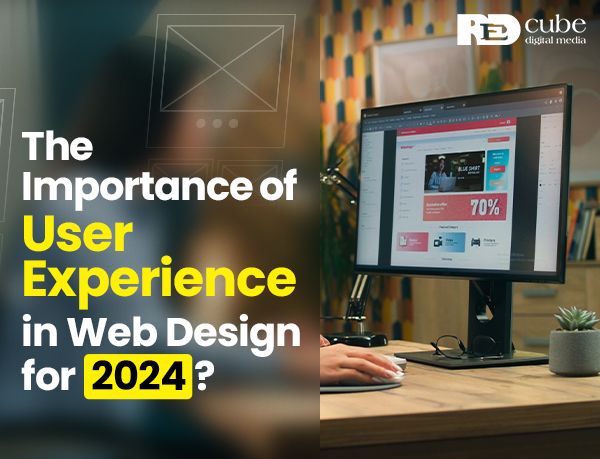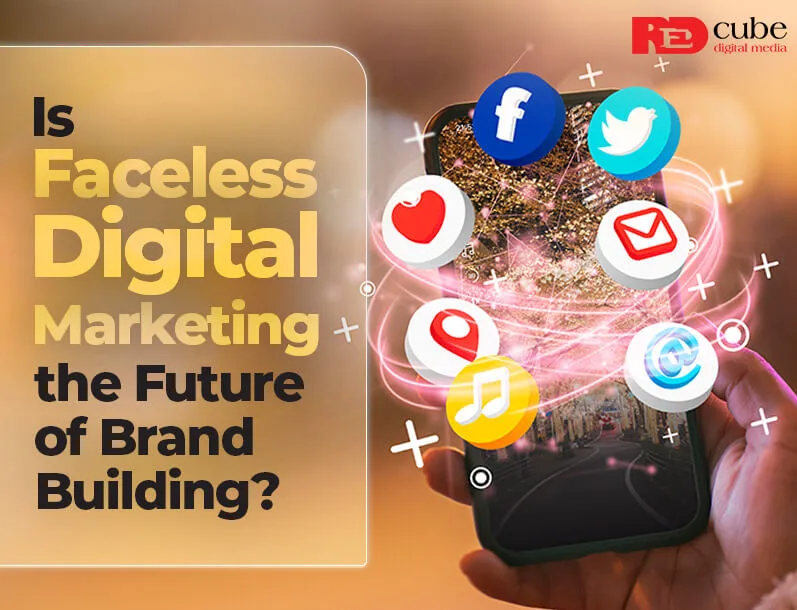Are you tired of navigating through bulky, confusing websites? Do you ever find yourself frustrated by a lack of intuitive design when trying to accomplish a simple task online? In today’s fast-paced digital world, user experience (UX) has become more crucial than ever. Join us as we delve into the ever-evolving landscape of web design, exploring the vital role of UX in 2024 and beyond.
We’ll uncover the latest UX trends 2024, best practices, and the tangible benefits of putting your users first. Let’s undertake this journey to understand why prioritizing user-centric design is not just a trend but a necessity.
What is User Experience (UX) Design?
UX design involves the complete process of creating and enhancing a website to guarantee a great user experience. It takes into account visual design, information architecture, usability, accessibility, and user interface (UI) optimization.
Why is UX Design So Important?
Here are some compelling 5 reasons to prioritize UX design in 2024:
- Increased User Engagement
- Enhanced Brand Reputation
- Improved Search Engine Optimization (SEO)
- Reduced Bounce Rates
- Increased Customer Satisfaction
A well-designed website keeps users engaged, encouraging them to explore different sections, consume content, and interact with your brand. Studies by Micro Focus show that websites with a positive UX can experience a 400% increase in conversion rates.
A user-friendly website reflects positively on your brand. It conveys professionalism, trustworthiness, and a commitment to user satisfaction.
Search engines like Google prioritize websites that offer a good user experience. Faktoren & Feng (2021) found a strong correlation between website usability and search ranking. Focusing on UX can improve your website’s organic visibility.
Bounce rate refers to the percentage of visitors who leave your website after viewing only one page. Websites with poor UX often have high bounce rates. Effective UX design can significantly reduce bounce rates and keep users engaged.
A positive user experience leads to happier customers. When users can easily find the information they need and complete tasks intuitively, they are more likely to be satisfied with their interaction with your brand.
Top 5 UX Design Trends to Watch in 2024
The field of UX design is constantly evolving. Here are some key trends to watch for in 2024:
- Focus on Microinteractions
- Voice User Interfaces (VUIs)
- Personalization
- Accessibility for All
- Mobile-First Design
Microinteractions are small design elements that provide users with subtle feedback and enhance the overall user experience. Examples include hover effects, animations, and progress bars.
The rise of voice assistants like Siri and Alexa is driving the demand for websites optimized for voice search. In 2023, Statista reported that over 4.2 billion people are expected to use voice assistants regularly by 2025. Websites that integrate voice search functionality will cater to this growing user base.
Personalization allows you to tailor the user experience based on individual preferences and behaviors. This can be achieved through targeted content, product recommendations, and dynamic layouts.
Inclusive design ensures that everyone can access and use your website regardless of ability. This includes features like screen reader compatibility, keyboard navigation, and clear and concise language.
With the ever-increasing use of mobile devices to access the internet, ensuring your website offers a seamless experience on all screen sizes is crucial. Responsive web design is an essential element of a mobile-first approach.
10 Web Design Best Practices for Optimal UX
Here are some key web design best practices to keep in mind for optimal UX:
- Clearly defined website goals
- User-centered design approach
- Intuitive navigation
- Clean and uncluttered design
- High-quality visuals
- Fast loading times
- Mobile responsiveness
- Accessibility best practices
- Clear calls to action (CTAs)
- A/B testing
Before diving into design, establish clear goals for your website. What do you want users to achieve? Understanding your goals will inform your design decisions and guide the user journey.
Put the user at the forefront of the design process. Conduct user research, gather feedback, and use that information to inform your design choices.
Your website’s navigation should be clear, consistent, and easy to understand. Users should be able to find what they’re looking for quickly and effortlessly.
Avoid overwhelming users with too much information or visual clutter. Use white space effectively and prioritize content hierarchy.
Use high-resolution images, videos, and graphics that are relevant to your content and visually appealing.
Slow loading times can significantly impact user experience. Optimize your website for speed to ensure a smooth and frustration-free experience.
As mentioned earlier, ensure your website displays and functions flawlessly across all devices, especially smartphones and tablets.
Integrate accessibility features like alt text for images, clear color contrast, and keyboard navigation to cater to users with disabilities.
Tell users what you want them to do next. Use strong CTAs that are easy to find and understand.
Continuously test and refine your website design using A/B testing to see what resonates best with your users.
Measuring the Success of UX Design
There are several metrics you can use to measure the success of your UX design efforts:
- Website traffic and engagement metrics
- Conversion rates
- User Feedback
- Customer satisfaction scores
Track metrics like website traffic, bounce rate, time spent on the site, and page views to understand how users are interacting with your website.
Measure how effectively your website converts visitors into leads or customers.
Gather user feedback through surveys, heatmaps, and user testing to gain insights into their experience and identify areas for improvement.
Track customer satisfaction metrics, such as Net Promoter Score (NPS), to understand how satisfied users are with their interaction with your brand.
Investing in UX Design: A Smart Business Decision
By prioritizing UX design, you’re not just creating a website; you’re crafting a positive user experience that promotes brand loyalty and drives business growth. Here at RedCube Digital, we are a passionate team of UX/UI designers who understand the power of user-centric design. We can help you create a website that not only looks stunning but also delivers an exceptional user experience.
Is your website due for a UX refresh? Let’s chat! Contact RedCube Digital today for a free consultation and discuss how we can help you create a website that delights your users and achieves your business goals.
Please share your thoughts and questions about UX design in the comments below!
FAQ – Frequently Asked Questions
Q: How much does UX design cost?
A: The cost of UX design can vary depending on the size and complexity of your website, as well as the scope of services required. RedCube Digital offers flexible UX design packages to suit your budget. Contact us for a free quote.
Q: How long does the UX design process take?
A: The UX design process typically takes several weeks, depending on the project’s scope. This timeframe may include user research, information architecture development, prototyping, and usability testing.
Q: Can I improve the UX of my existing website?
A: Absolutely! RedCube Digital offers UX audits and optimization services to help you identify areas for improvement and enhance the user experience of your existing website.



